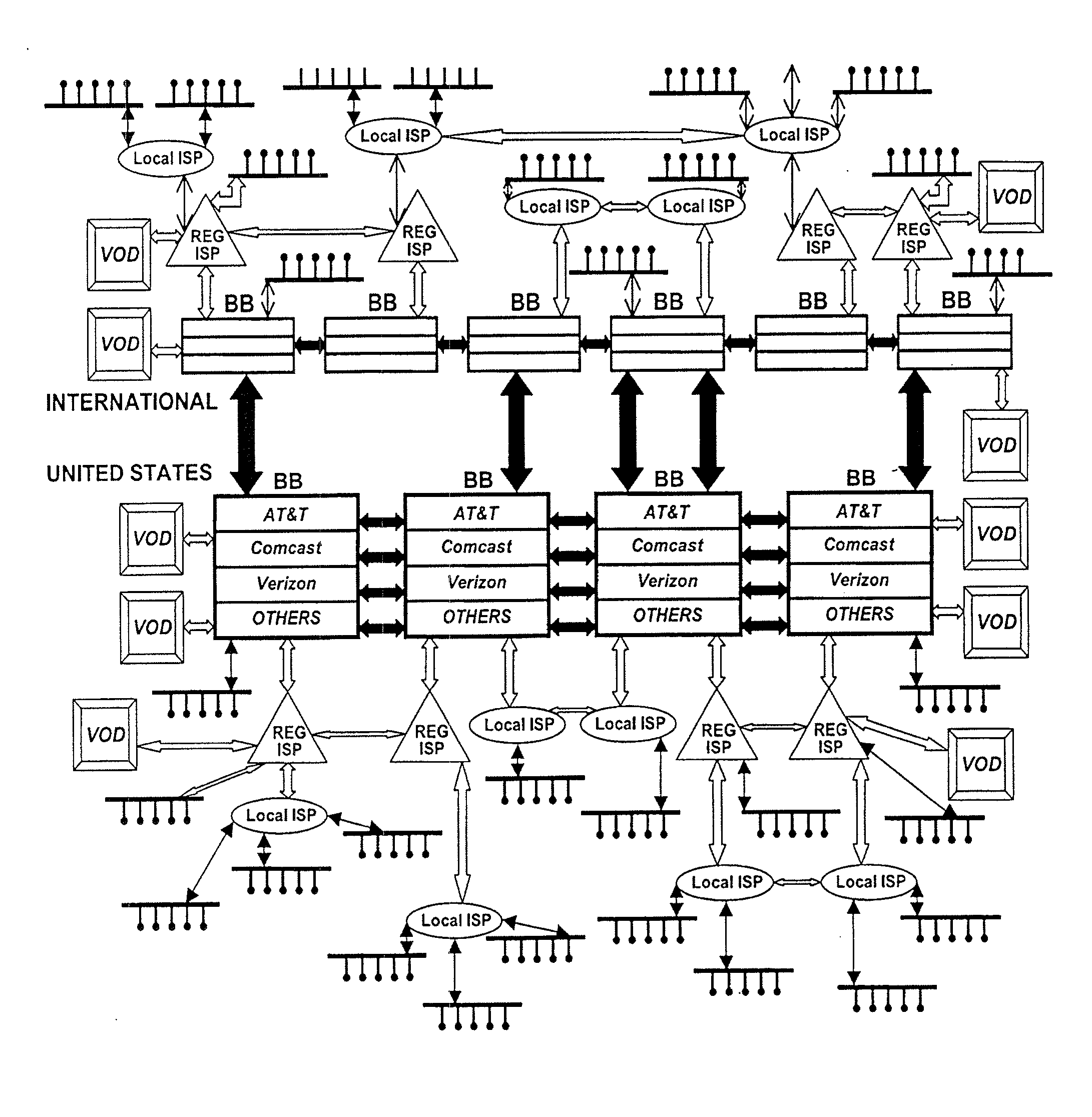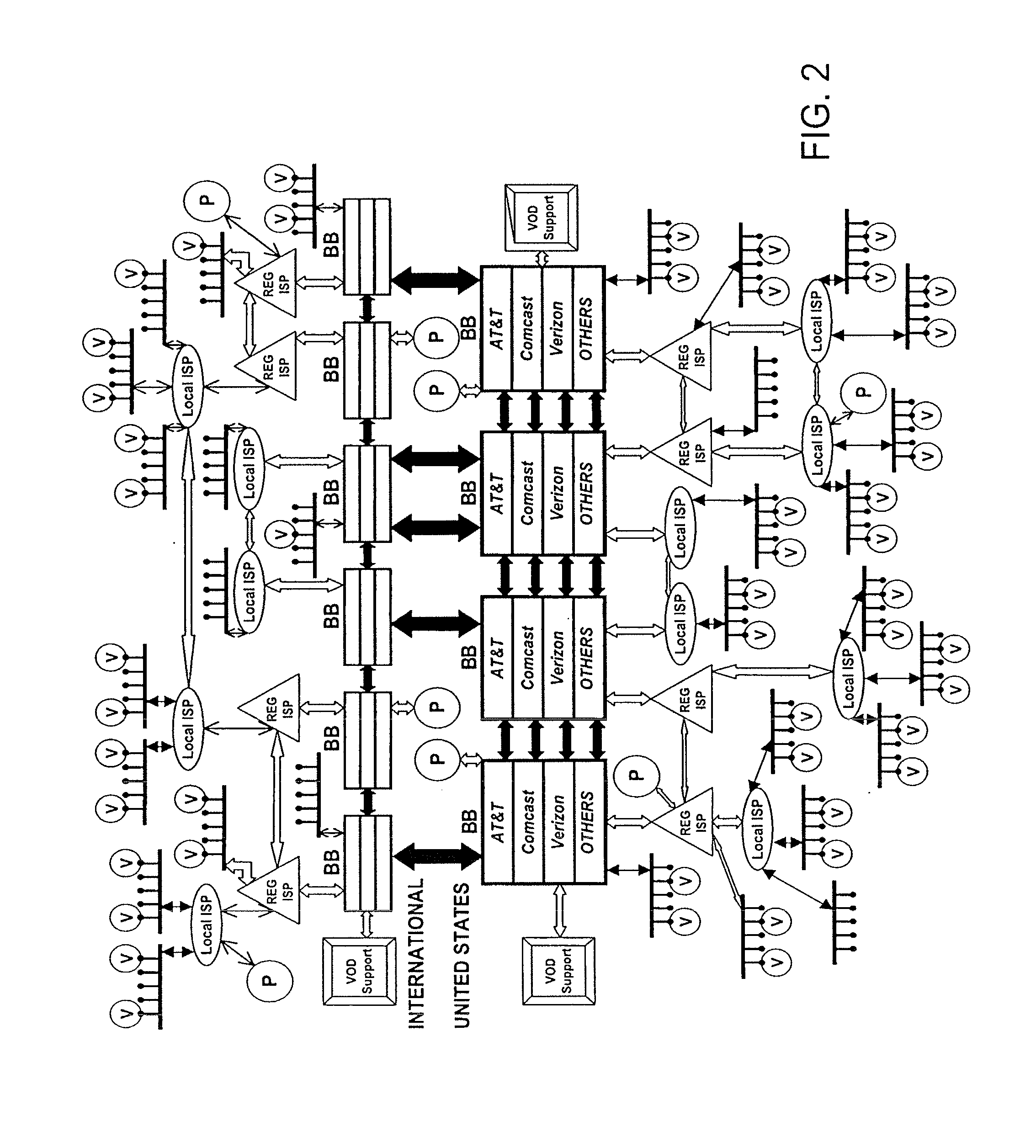Push-pull based content delivery system
a content delivery system and push-pull technology, applied in the field of distribution networks, can solve the problems of vod, real-time audio and video delivery, vod in particular, and has so far not been susceptible to purely distributed p2p architectural solutions, and places heavy demands on network resources, etc., to achieve high qos for subsequent requests, high qos, and high qos
- Summary
- Abstract
- Description
- Claims
- Application Information
AI Technical Summary
Benefits of technology
Problems solved by technology
Method used
Image
Examples
Embodiment Construction
Key Concepts
[0067]Clusters and Trust Levels
[0068]As noted above, certain aspects of the Internet's existing physical infrastructure can be obtained from publicly available information. Such information can be utilized in one embodiment, illustrated in FIG. 3, to create groups of VOD peers known as Clusters. Standard IP address location services may be utilized, in combination with IP ranges and other known physical infrastructure information, to effectively translate a VOD peer's IP address into a “Cluster Identifier” or Cluster ID that serves to identify hierarchies of Clusters, as also illustrated in FIG. 3. In this embodiment, these Clusters are created and modified dynamically.
[0069]Because these Clusters are created initially from known physical infrastructure information, and updated dynamically based upon network traffic statistics derived from monitoring generic and actual data transfers and performing related tests, they represent more than just a group of VOD peers. In par...
PUM
 Login to View More
Login to View More Abstract
Description
Claims
Application Information
 Login to View More
Login to View More - R&D
- Intellectual Property
- Life Sciences
- Materials
- Tech Scout
- Unparalleled Data Quality
- Higher Quality Content
- 60% Fewer Hallucinations
Browse by: Latest US Patents, China's latest patents, Technical Efficacy Thesaurus, Application Domain, Technology Topic, Popular Technical Reports.
© 2025 PatSnap. All rights reserved.Legal|Privacy policy|Modern Slavery Act Transparency Statement|Sitemap|About US| Contact US: help@patsnap.com



